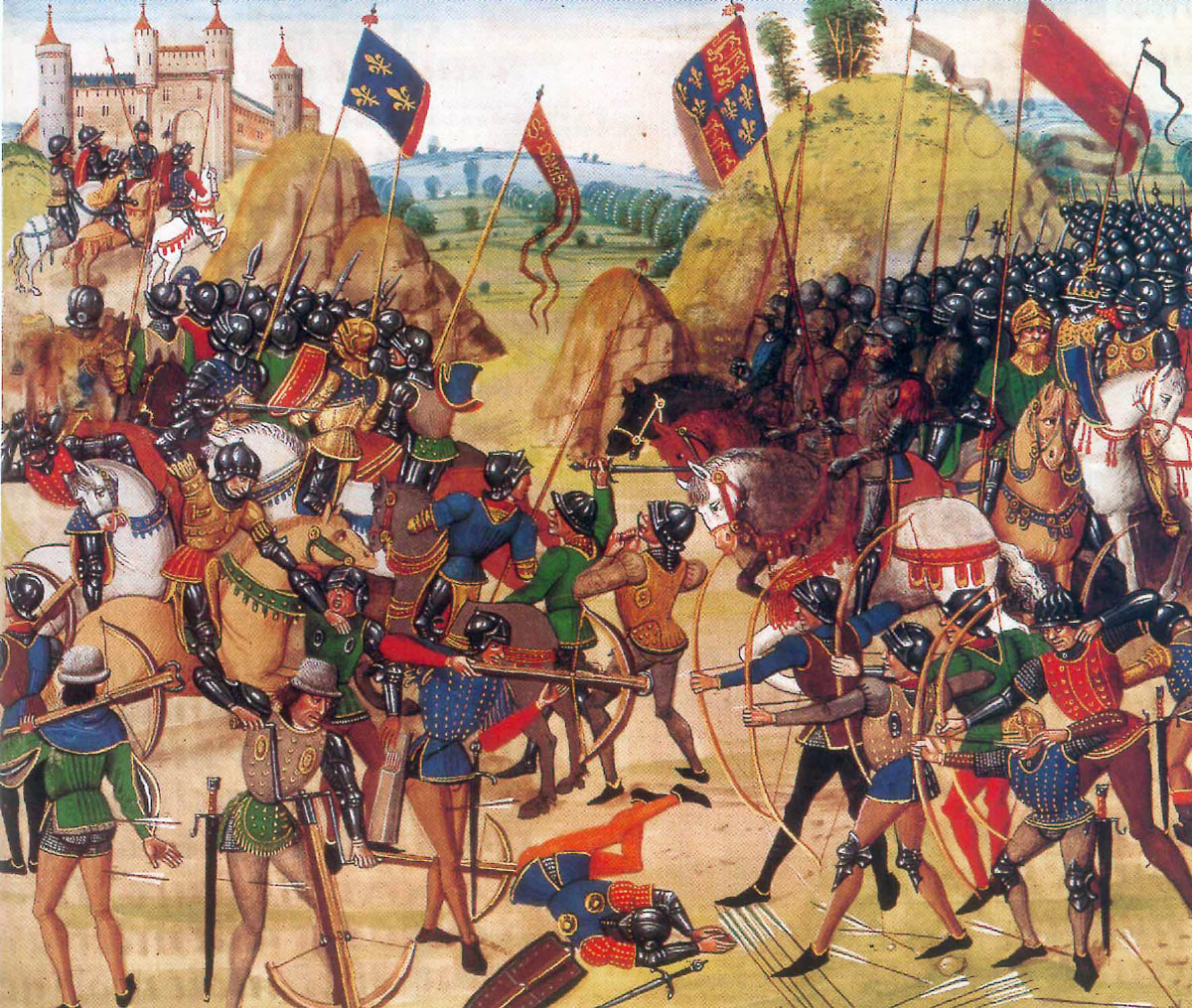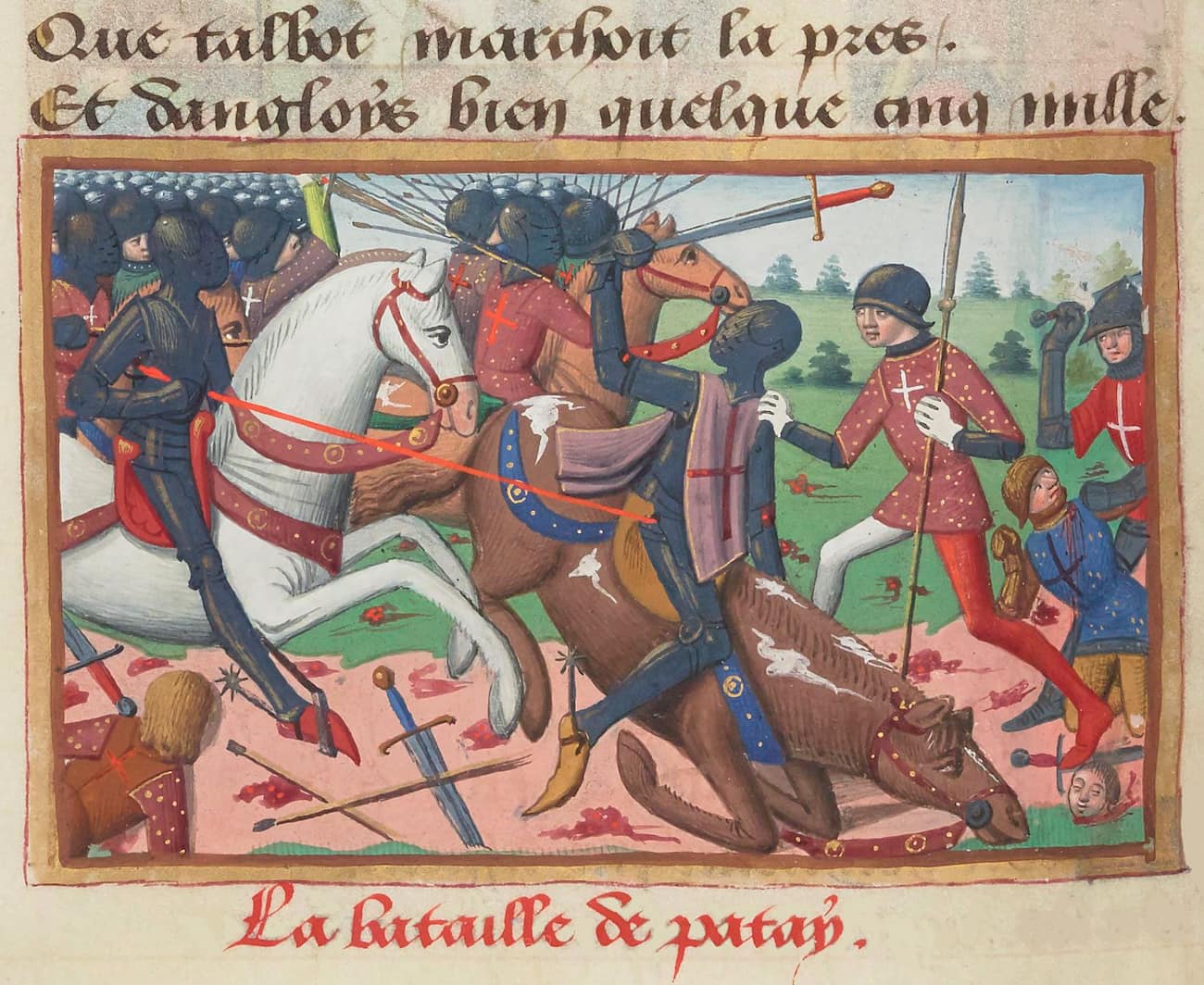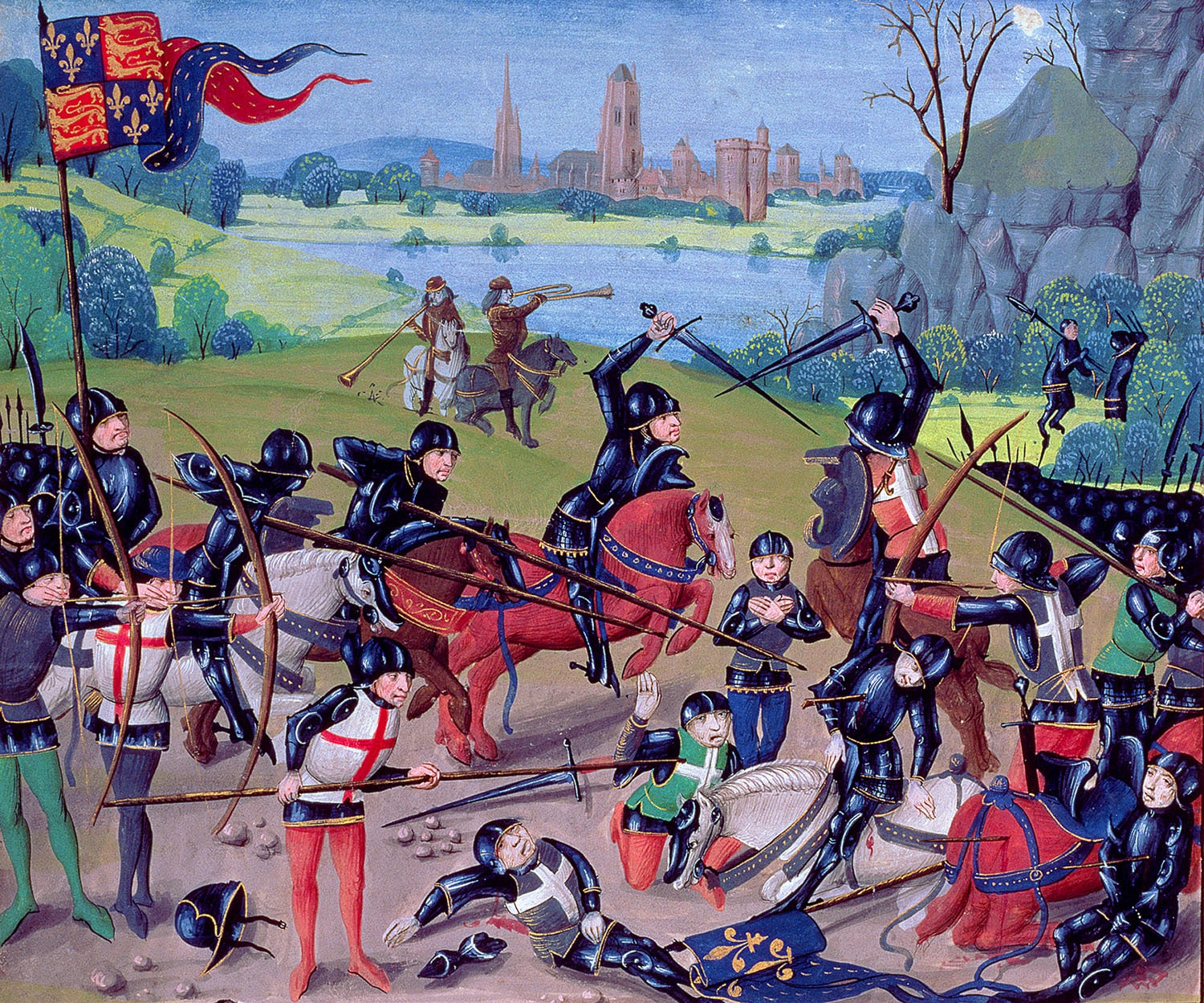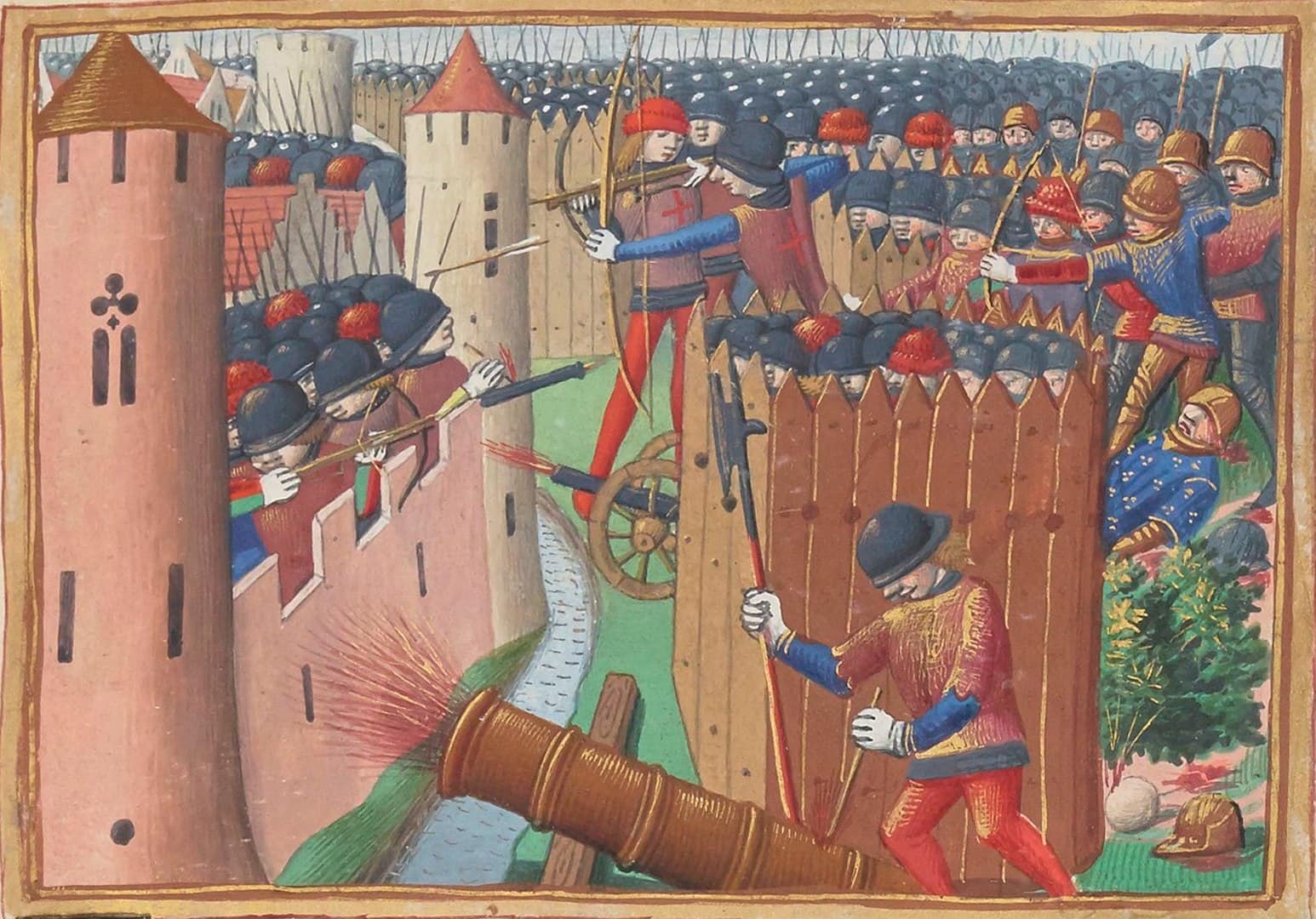At the Battle of Crécy on August 26, 1346, King Philip VI of Valois of France was soundly defeated by King Edward III of England, setting the stage for the upcoming Hundred Years’ War. Near Crécy-en-Ponthieu (today in the Somme) in northern France was the scene of the first major fight of the war, which sounded like a bomb going off in Christendom. By showing that a force of archers and foot troops could stave off an attack by armored knights, England’s triumph struck a devastating blow to the notion of the feudal warrior. Unfortunately, the French nobility will not learn their lesson, and this will be the first of many crushing defeats.
Background of the Battle of Crécy
After Charles IV of France passed away without an heir in 1328, the lengthy line of Capetian sovereigns that had been in place since Hugues Capet in the 10th century came to an abrupt end. Although Philip IV the Fair’s sons all died at a young age (Louis X did have a son, John, but he died at the age of 4), his daughter Isabella, who was married to Edward II of England, bore him a son named Edward III. Not to mention, didn’t he have the right to be king of France? The great nobles of France voted in favor of Philip of Valois, the grandson of Philip III the Bold and therefore the relative of the recently deceased monarch, in an election.
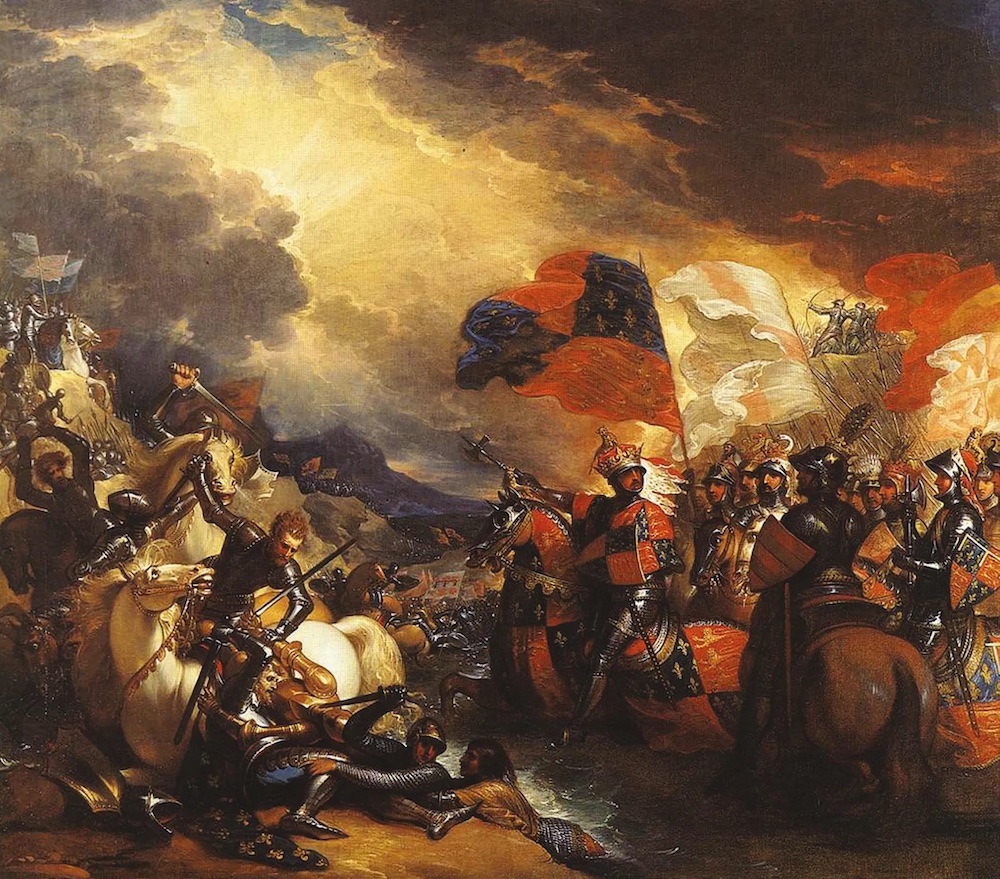
The rivalry between the kingdom of France and the kingdom of England was already secular at the time. The tensions between the two countries may be traced back to the reign of Louis VI the Fat in the 12th century and reached a first peak under the reign of Philip Augustus. When Philip VI of Valois was elected king of France, tensions over the contentious subject of tribute flared back up (it must be said that they had never really subsided since Saint Louis). Due to his extensive holdings in France (Guyenne), King Edward III of England was compelled to acknowledge his subordination to King Louis XIV. However, the English monarchy decided that this demeaning practice must end. The Plantagenet dynasty was descended from France and was therefore a vassal of the French crown, a peculiarity of the feudal system that found a very reasonable explanation.
Hundred Years’ War: The first conflicts
Henri II Plantagenet, the legendary Richard the Lionheart’s dad, started it all when he rose from the ranks of count of Maine and Anjou to duke of Normandy upon his father’s death and then duke of Aquitaine upon his marriage to Eleanor (he was also the grandson of Henri I Beauclerc, king of England and great rival of Louis VI the Fat). The election of Philip VI shattered this delicate balance. The new king of England benefitted from Philip’s tendentious treatment and inadequately ensured power after being ousted from the throne in accordance with the salic law (prohibition of the succession by women).
On May 24, 1337, Philip announced the seizure of the French estates of the King of England, sparking the initial hostilities that would eventually lead to a full-scale war between the two countries. The first operations were time-consuming and consisted mostly of city sieges and captures in and around Edward’s lands in Guyenne. In the north of the kingdom, in Flanders, the fighting got worse because King Henry VIII knew he could gain allies by taking advantage of the province’s dislike of the French crown. Since Philip IV, in particular, Flanders had been regularly invaded by French armies to bring it back under control because the Capetians were afraid of its ties to England.
Using this county as a staging area, Edward launched a chevauché (a rapid attack of destruction) in 1339; Philip responded by mobilizing an army, and Edward ultimately betrayed him. The year 1340 was a disaster for the King of France because the English destroyed his navy. The English were then able to settle anywhere they pleased since they controlled the seas. When the French danger on Guyenne needed to be neutralized, Edward gave the command to Count Derby, who performed heroically in the South West on behalf of the English camp by eliminating the French presence. The two rivals battled in Brittany as well, where they backed rival pretenders to the duchy. However, the battle didn’t really heat up until 1346.
Edward’s ride
On July 12, the nautical genius King of England chose to dock in France at the Cotentin. After that, he launched a swift invasion from west to east, plundering the areas around Paris, before heading back north with his booty. Philip hesitated for a long time before pressing the English king into conflict because he was worried about the loyalty of his nobility, which he thought was dwindling, and the repercussions of his confusing conquest. When the English army encountered the Picards, who had been alerted by the smoke columns covering the route of the English king, the pursuit took a sudden left turn. Many times he tried to push his way over bridges, only to be turned back each time.
However, Philip shows no indication of giving up the chase. He’s certain he can lure his foe into a trap and then win a decisive confrontation by fighting him where he feels most comfortable. The English were worn out from fighting and forced marches. On the other hand, on August 23, a poor prisoner named Gobin-Agache repaid his parole by pointing out a ford to a frantic Edward, completely tipping the scales in favor of the Valois. The English army overcame steadfast resistance to ultimately win. Philippe, who is in charge of the bridges, was the last person to visit Abbeville.
Battle of Crécy

After resuming his journey on August 25, Edward III settled at Crécy to await the arrival of the king of France, whom he knew would be impossible to evade. However, he was now in a position of power since he could decide where the encounter would take place. The French, meanwhile, embarked the next day, determined to fight a heroic battle in which they might earn praise from God and the attention of their monarch. They marched all day, covering approximately 25 kilometers, to meet up with the English armies’ well-timed engagements.
On the journey, scouts informed Philip that the enemy was far away and that the army would waste its energy marching in vain, arriving at the battlefield much too late to make a difference. They advised their monarch to rest for the night, saying that the English would still be there in the morning. It was then that Philip issued the order to halt. But the French nobility was not known for its discipline, and feudal osts were not built on a foundation of order.
Philip VI of Valois, leader of the French, was compelled to travel along with the army since it was mostly composed of his subjects. Even though Edward’s army spreads sideways all the way to Abbeville, the French only reach the point of contact in the late afternoon. In particular, the marshals and Philippe had a hard time constructing orderly rows. The English side waited all day. Due to the constant updates from his scouts, Edward even allowed his men to break ranks throughout the day to do as they pleased in terms of food and drink. The English were waiting for the French to sit down as they trudged over the sandy roads that day in 1346. The well-organized and rested English stand in stark contrast to the disorganized and tired French.
The engagement of the Welsh archers
To strengthen his army and help him fight the Welsh archers again, Philip paid a gold fee to recruit crossbowmen from Genoa. So it seems to have forgotten the lessons of the naval battle of the Lock. The archers’ massive bows, which were over two meters in height, enabled them to shoot rapidly and powerfully. The crossbow was more effective, but it took time to reload, and occasionally a crank was used to tighten the strong steel bow. This will prove true once again in Crécy.
They dispatched the Genoese ahead to fight the English archers. Quickly, the volleys of arrows did their work, and the mercenaries, whose paid involvement did not inspire them to acts of bravery, disbanded and fled in disarray. But the French knights moved up behind them in tight formation. Realizing the mercenaries were being cowardly, and with Philip’s approval, they slaughtered them while being pelted by relentless English arrows.
Jean Froissart, even assures us that in this dense cluster, not a single shot was wasted. Jean de Luxembourg, blind but still on horseback, would have said when he heard about this affair, “Poor beginning…” There were a few who were able to free themselves from the knot and launch an attack on the English stronghold on this hill. They’re charging forward through an onslaught of arrows that the defenses haven’t been able to stop yet. Rows of stakes hammered into the ground met them on the other side, deflecting the first attacks and leaving the first knights vulnerable to the knives and daggers of the English footmen.
Once unstoppable, the French knights’ tremendous charge had been waning in recent years in the face of new tactical dispositions, such as the one used by the Flemish footmen in 1302 at Kortrijk, the Battle of the Golden Spurs. The English had also been humbled at the hands of the Scots in the Battle of Bannockburn in 1314, but although this had been fruitful for the English, it had altered nothing for the French, particularly after they had avenged their disgrace twice.
It would take a lot more killings for people to start questioning the concept of chivalry. Multiple charges came crashing down on the stakes, exposing the French aristocracy to the assaults of the onlookers. At last, a mounted unit managed to breach the defenses. The combat soon took a more traditional course for the French knights, allowing them to display all their gallantry and heroism.
Both the Black Prince and his army faced challenges in this encounter. However, there were far too few French at this stage to pose any real threat to the English establishment, and they were all wiped off. With the sun setting and his army unable to make any headway, Philip VI gave up and left the battlefield, leaving the remaining loyal knights to fight to the bitter end. He ran away to the country, first to the castle of Labroye and later to Amiens. Edward III’s reserve army was spared from the slaughter since the fight was such a failure.
Aftermath of the Battle of Crécy
Once again, the French nobility was choked to death, causing the French aristocracy to suffer a severe moral dilemma. As a matter of fact, Philip VI lacked the initiative and did not take any more risks to locate the English in an open land. When Edward III won at Crécy, he moved the seat in front of Calais, which eventually fell eleven months later. Philip had amassed a sizable army of supporters, but, out of respect for the English, he chose to retire without a battle. The fact that Calais would stay in English hands until 1557 gave the English monarchs a fantastic base from which to launch future raids into French territory.
Consequently, the greatest Western force had been entirely crushed, revealing its weaknesses: its historic feudal system, against which the royal authority could rarely impose itself, particularly in the current situation, where the succession was slanted. The notion of the state’s greater interest was still unfamiliar, and private interests still had to sow discord on the French monarchy’s side. Clearly, from a military standpoint, Crécy represents the sclerosis of the huge charge technique in the face of an organized and determined adversary. It was the English volleys of arrows that did the most damage, knocking off the hefty knights’ horses and leaving them too shocked to get back on their feet in time. The honorable war had just been cruelly reminded of the harsh reality of real-life circumstances.
Bibliography:
- Emmanuel Tonetti, Crécy, la bataille des cinq rois, 26 août 1346, Emmanuel Tonetti, 2004.
- Dictionnaire des guerres et des batailles de l’histoire de France, Paris, Perrin
- Lucas, Henry S. (1929). The Low Countries and the Hundred Years’ War: 1326–1347. Ann Arbor: University of Michigan Press. OCLC 960872598.
- Rogers, Clifford, ed. (2010). The Oxford Encyclopedia of Medieval Warfare and Military Technology, Volume 1. New York: Oxford University Press.
- Neillands, Robin (2001). The Hundred Years War. London: Routledge.


